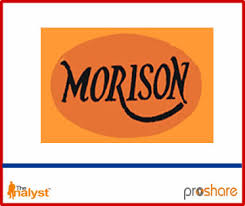Morison Industries Plc has reported a loss of N18.55 billion for the first quarter ended March 31, 2025, an improvement from the N28.46 billion loss it recorded in the same period last year. This was disclosed in the company’s unaudited financial statement released to the Nigerian Exchange Group.
Despite ongoing losses, the company saw a notable rise in revenue during the quarter. Total revenue grew to N91.5 million, a significant jump from N32.6 million reported in the first quarter of 2024. This increase in sales helped push Morison Industries’ gross profit to N26.7 million, up from just N728,000 last year. The improved turnover suggests growing demand for the company’s products, but high expenses continue to affect its bottom line.
According to the financial statement, cost of sales nearly doubled, rising to N64.8 million from N31.9 million in the same period of 2024. While this reflects the higher cost of production and operations, it also indicates that the company expanded its activity within the market during the quarter.
However, the improvement in revenue and gross profit was not enough to cancel out the impact of rising operational and distribution expenses. Distribution costs rose to N7.8 million from N6 million in Q1 2024, while operating expenses jumped to N48.3 million from N36.8 million. These high overhead costs remain a challenge for the company’s turnaround efforts.
Other operating income also declined slightly from N18.4 million in Q1 2024 to N15.8 million this year. As a result, Morison Industries reported a loss from operations of N13.7 billion. This figure still marks a significant improvement from the N23.6 billion loss from operations reported in the same period last year, showing that the company is making gradual progress toward reducing its losses.
Finance expenses stayed flat at N4.9 billion, with no finance income recorded. This means the company continues to bear the full burden of its debt servicing obligations. There were no tax expenses reported for the quarter, leaving the total loss before and after tax at N18.55 billion. Loss per share remained unchanged at 2 kobo.
A look at the company’s balance sheet shows a slight growth in total assets, which rose to N1.61 trillion as of March 31, 2025, up from N1.57 trillion recorded at the end of December 2024. Non-current assets accounted for N1.4 trillion, while current assets grew to N208.8 billion. The growth in current assets was supported by increases in inventories, trade receivables, and cash and cash equivalents, suggesting improved working capital.
However, the company’s liabilities also increased. Total liabilities rose to N813.6 billion from N759.4 billion at the end of 2024. The bulk of this increase came from current liabilities, which grew to N629 billion, mainly due to increased borrowings and trade payables.
As a result of continued losses, shareholders’ equity declined slightly from N813.7 billion to N795.2 billion, raising concerns about the long-term sustainability of the company if the losses persist.
Morison Industries has been struggling in recent years to turn around its financial performance. While the company has made visible improvements in its revenue and reduced its losses year-on-year, persistent high operating costs and finance expenses continue to weigh heavily on its profitability.
Market analysts will be watching closely in the coming quarters to see whether Morison Industries can continue this trend of reducing its losses and possibly return to profitability. The company will also need to find ways to manage its expenses more effectively while boosting its revenue base to remain competitive in the Nigerian manufacturing sector.
